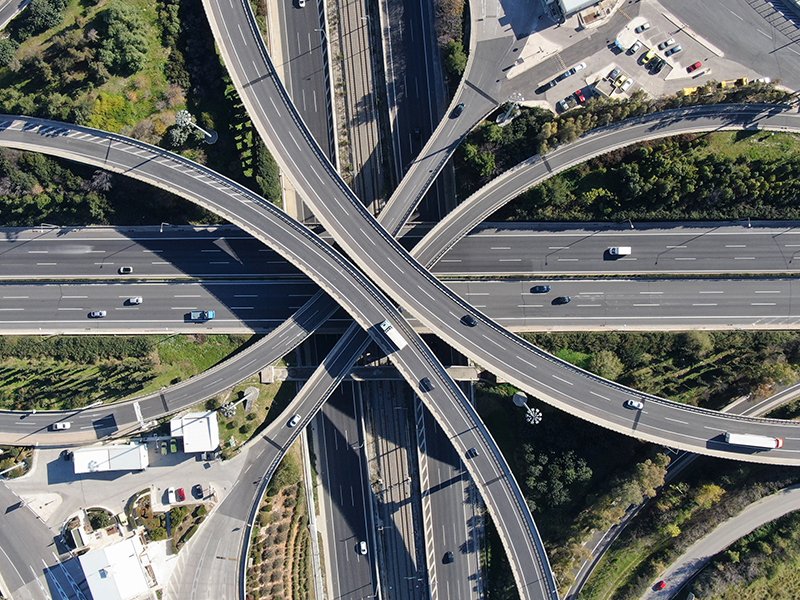
In the realm of infrastructure development, few projects hold the promise of transformative change like the proposed two-layer elevated road stretching from Dhaula Kuan to Manesar. As the brainchild of the National Highways Authority of India (NHAI), this ambitious endeavor not only aims to alleviate traffic congestion and enhance connectivity but also harbors the potential to ignite a real estate boom along its path. In this comprehensive analysis, we explore the myriad ways in which the construction of this elevated road could catalyze economic growth, redefine urban landscapes, and unlock new opportunities for real estate development.
1. The Imperative for Enhanced Connectivity:
– Delve into the current transportation challenges plaguing the Dhaula Kuan to Manesar corridor, including traffic congestion, inadequate infrastructure, and logistical inefficiencies.
– Discuss the economic and social significance of improving connectivity in facilitating the seamless movement of goods, services, and people.
– Highlight the strategic importance of the proposed elevated road in addressing these challenges and unlocking the region’s economic potential.
2. Unveiling the Vision: Design and Features of the Elevated Road:
– Provide a detailed overview of the architectural and engineering marvel that is the two-layer elevated road, outlining its design, structural components, and innovative features.
– Discuss the integration of state-of-the-art technologies such as advanced traffic management systems, intelligent signage, and eco-friendly materials in ensuring optimal performance and safety.
– Explore the aesthetic considerations and urban design elements incorporated into the project to enhance its visual appeal and harmonize with the surrounding environment.
3. Economic Implications: Stimulating Growth and Investment:
– Analyze the anticipated economic impact of the elevated road on the Dhaula Kuan to Manesar corridor, including its potential to attract investment, stimulate job creation, and catalyze economic growth.
– Examine the ripple effects of improved connectivity on various sectors such as manufacturing, logistics, tourism, and real estate.
– Highlight case studies and empirical evidence from similar infrastructure projects worldwide to illustrate the positive correlation between transportation infrastructure development and real estate appreciation.
4. Redefining the Real Estate Landscape:
– Forecast the potential implications of the elevated road on the region’s real estate market, including changes in property values, demand dynamics, and development patterns.
– Identify key nodes along the corridor poised for real estate development, such as transit-oriented developments, commercial hubs, and mixed-use complexes.
– Discuss the opportunities and challenges for real estate developers, investors, and urban planners in capitalizing on the infrastructure-induced growth and maximizing returns on investment.
5. Regulatory and Environmental Considerations:
– Address regulatory hurdles, environmental impact assessments, and land acquisition challenges associated with large-scale infrastructure projects like the two-layer elevated road.
– Highlight the importance of adopting sustainable development practices, mitigating environmental risks, and engaging in stakeholder consultation to ensure the project’s long-term viability and social acceptance.
– Discuss potential strategies for streamlining regulatory processes, enhancing transparency, and promoting public participation in decision-making to foster trust and accountability.
6. Collaborative Opportunities and Innovation:
– Advocate for public-private partnerships and collaborative initiatives to accelerate the construction and financing of the elevated road project.
– Explore innovative financing mechanisms, such as value capture financing and land monetization strategies, to fund infrastructure development while generating revenue for stakeholders.
– Showcase examples of technological innovation and smart infrastructure solutions that can enhance the efficiency, safety, and sustainability of the elevated road, setting a new standard for urban mobility and development.
7. Community Engagement and Inclusive Development:
– Emphasize the importance of community engagement, social inclusion, and equitable development in realizing the full potential of the elevated road project.
– Propose initiatives for affordable housing, workforce development, and community amenities to ensure that the benefits of infrastructure-led growth are accessible to all residents, including marginalized communities.
– Encourage dialogue, collaboration, and partnership between government agencies, civil society organizations, and local communities to co-create a shared vision for the future of the Dhaula Kuan to Manesar corridor.
Conclusion:
As we look ahead to the realization of NHAI’s visionary two-layer elevated road project, let us embrace the prospect of a revitalized real estate landscape, characterized by vibrancy, prosperity, and sustainability. By leveraging the power of infrastructure to connect people, businesses, and opportunities, we have the potential to usher in a new era of inclusive growth and prosperity for generations to come. Let us unite in hope and anticipation for a real estate boom that not only enriches our cities but also enriches the lives of all who call them home.
